One of the best ways to add warmth, texture, and a layered look to your home is by adding rugs. But far too often a client is turned off to the idea of a rug because of the care and maintenance they bring. This may be true. HOWEVER, it widely depends on the construction and material of the rug.
A lot of you have also asked what the pros and cons are to owning certain types of rugs, how to best take care of them, and what it means to be hand loomed vs. hand knotted vs. machine made, etc.! Well wait no longer because here is the rug breakdown you’ve been asking for – all your questions answered and rumors you’ve heard debunked!
Types of Rug Construction
Hand Knotted – Weaving a hand knotted rug takes a great deal of skill and time to produce. It is the most labor intensive of all rug construction. Weavers tie individual knots to the warp yarns (yarn making up the length of the rug). These knots form the pile (surface) of the rug. Because of this technique, no two hand knotted rugs are the same. The quality and cost of a hand knotted rug relate directly to the number of knots per square inch. The higher number of knots in a square inch means a higher density which means higher quality. This all depends on the pattern of the rug, so the more complex the pattern, the more dense the rug. Typically hand knotted rugs cost more than hand tufted rugs. These types of rugs may cost the most, but will last the longest. They are VERY durable and can last 100+ years (a lot of vintage rugs you’ll find are hand knotted).
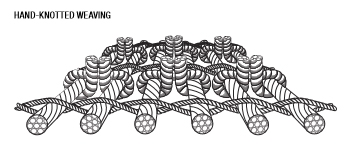
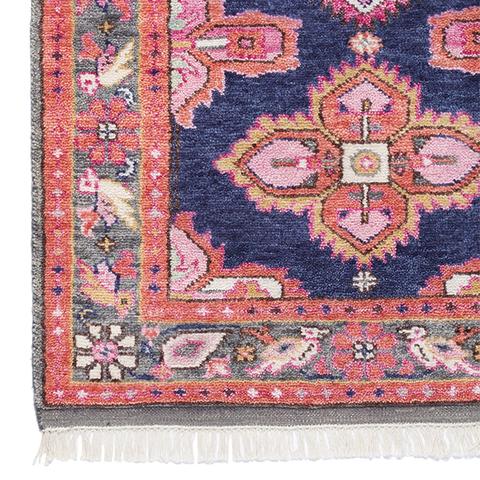
Hand Tufted – A hand tufted rug is made by pulling loops of yarn through the rug’s backing material using a handheld tool. The loops are then cut to form the pile of the rug. This does not require nearly as much time or skill as a hand knotted rug. Because hand tufted rugs don’t require as much labor they are considerably less expensive. One thing to note about hand tufted rugs is that these tend to shed more and require regular vacuuming. An example of a hand tufted rug is a shag rug. *Best for living rooms, bedrooms, and living rooms
Hand Hooked – Hand hooked rugs follow the same construction method as hand tufted except the loops are not cut. You’ll be able to tell the difference because the hand hooked rugs are made up of a bunch of tiny loops of yarn where the hand tufted have short pieces of cut yarn.
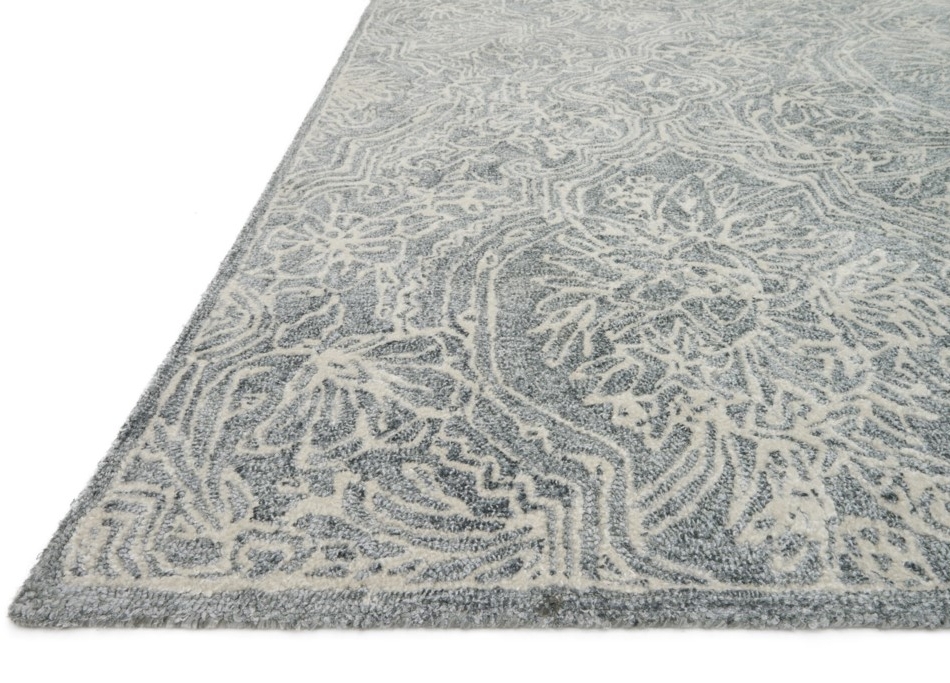
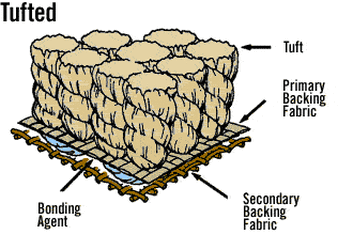
Hand Woven (Aka Flat Weave) – These rugs are woven similar to a basket, meaning the front and back look basically the same. They have no pile or actual knots, making hand woven rugs easier to clean than rugs with a higher pile. Hand woven rugs can have a variety of looks based on the pattern being weaved (ex. Jacquard, basket weave, plain weave, diagonal). Because they don’t have any pile (less dust and dander), these rugs make a great option in a home where an occupant has allergies. Kids rooms, dining rooms, and offices where furniture, toys, and other items can easily move across the rug are other spaces where a hand woven rug would work well.
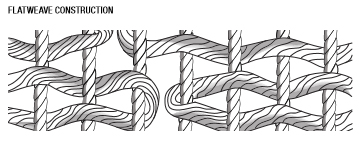
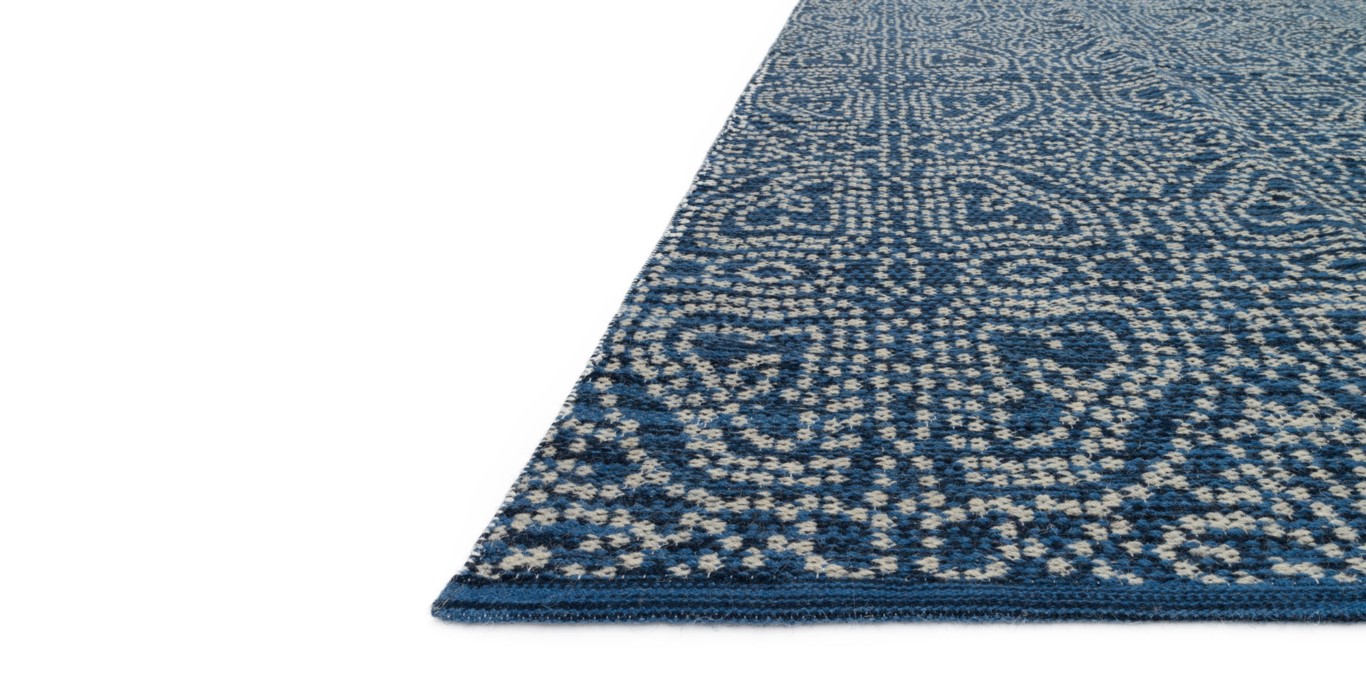
Machine Made (Power Loomed, Machine Loomed, Machine Woven) – essentially all these “types of construction” mean the same thing: the rug is made by a machine and not a person. These machines are made up of hundreds of spindles of fiber that are mechanically woven into a think mesh backing. Usually a computer is controlling the loom, setting the pattern leaving little room for error. The most affordable of all rug construction, these types of rugs are typically made out of synthetic material such as polypropylene, polyester, and nylon. These types of rugs are great for high traffic areas and are very low maintenance.

Braided – it’s just how it sounds, this construction of rug involves braiding. Done with natural fibers, synthetic materials, and most commonly cloth. In early settler times rugs would be braided together by hand but nowadays you’ll mostly find machine braided rugs using either the tubular or flat braid method. Depending on the material and quality of construction, these rugs can also be pretty durable. You see a lot of these used as door mats or entry rugs.
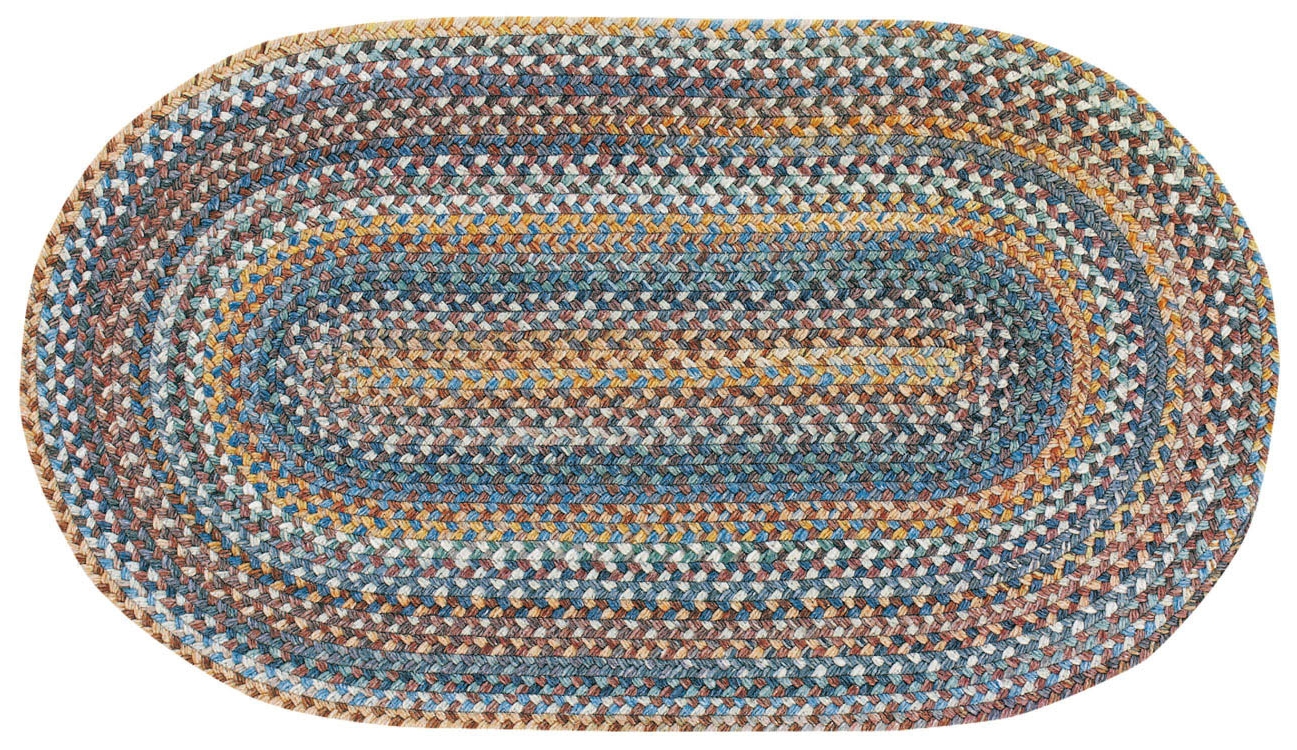
Common Rug Materials
Wool – the most common natural fiber used for rugs. It is a strong, durable material that is stain and fire resistant. There are many ways to clean a wool rug in case accidents occur but some of the most common are: using luke warm water and a mild soap, a clear colored stain remover (we prefer something natural that isn’t loaded with chemicals), white vinegar and water mixture, or a special wool detergent.
Jute – Another common natural fiber used for rugs, jute is manufactured from a subtropical plant found in Asia. Although Jute is nice underfoot because of its softness, it is not very durable and recommended in low traffic areas such as bedrooms. If an accident occurs on a jute rug, immediately dab water on the spill and scrub with a soft bristle brush. If you let a stain set in jute rugs it will be hard to get out. Here are more ways to care for your jute rug.
Sisal – a soft yet durable natural fiber, sisal can stand up to high traffic areas without being uncomfortable underfoot. You should be careful about having your sisal rug around a lot of moisture, however, because it can damage the fibers. You can apply treatment to the sisal fibers to make it resistant to dirt and spills. It is recommended to dry clean your rug since it doesn’t withstand moisture very well but here are a couple other home remedies to try.
Cotton – a soft and lustrous fiber that is used all over the world is also commonly found in rugs. Cotton rugs are not recommended in high traffic areas due to its sensitive and less durable fibers. Regular vacuuming and immediate blotting spills is key to taking care of your cotton rug. A lot of cotton rugs can be machine washable so check with the manufacturer to see what your options are.
Silk – silk is a soft and luxurious fiber and comes from the cocoon of a silkworm. It produces a high sheen and soft “silky” feel we know and love. Although silk is a strong fiber, it is not very durable. Silk rugs are recommended to be kept in low/minimal traffic areas such as bedrooms.You want to avoid a lot of moisture and abrasive cleaning agents when caring for a silk rug. It is recommended to take your silk rug to a professional cleaner but if you do want to use a home remedy make sure you are absorbing any spills or accidents quickly and using sensitive cleaning products. It is also recommended to vacuum a silk rug a few times a month but make sure the vacuum you are using has a brushless head option. It’s pretty common to a rug with a silk/wool blend because you get the durability of wool and the luxurious look of silk.
Viscose (Type of rayon) – Aka faux silk, comes from wood pulp but is considered partially man made because of the manufacturing process. It’s referred to as faux silk because you get the look and feel of silk without the price tag. Since it does have synthetic properties to it, it is a bit more durable. If any spills or accidents that occur you should blot the area NOT rub. Also make sure to vacuum it occasionally with a brushless vaccum head.
Synthetic fibers – Such as acrylic, nylon, and polypropylene are seen widely in machine made rug construction because of their durability and low cost. They can mimic the look of natural fibers without the worry of high maintenance and care. A lot of rugs made of polypropylene are safe for indoor/outdoor use, proving that they are an all weather rug. Staining can still occur depending on what’s spilled so make sure to clean accidents up quickly. But out of all fibers, synthetic fibers are the most bulletproof. They will stand up to high traffic areas, moisture, and sun exposure.


